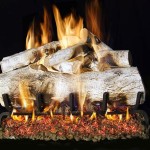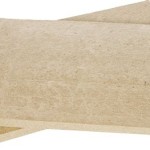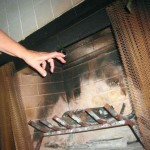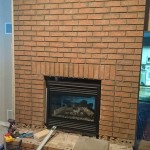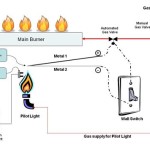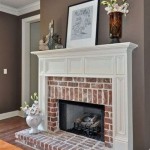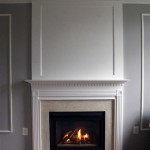Can You Put An Outdoor Fireplace On A Wood Deck?
The allure of an outdoor fireplace on a wood deck is undeniable. The warmth, ambience, and potential for social gatherings create an inviting outdoor space. However, the question remains: Is it safe and feasible to install an outdoor fireplace directly on a wood deck? A definitive answer requires careful consideration of several factors, including local building codes, deck construction, fireplace type, and necessary safety precautions.
Placing an open flame on a combustible surface like a wood deck presents inherent risks. Wood is highly flammable, and even with precautions, the potential for fire damage remains a significant concern. Therefore, a comprehensive evaluation of all related aspects is crucial before undertaking such a project.
Understanding Building Codes and Regulations
Local building codes are the primary determinant of whether an outdoor fireplace is permissible on a wood deck. These codes are designed to protect life and property by establishing minimum safety standards. Before proceeding with any installation, it is essential to consult the local building department and obtain the necessary permits. These permits often necessitate inspections to ensure compliance with safety regulations related to fire resistance, clearances from combustible materials, and proper ventilation.
Building codes typically specify minimum distances between the fireplace and any combustible materials, including the deck structure, siding, and overhead structures. These clearances are intended to prevent the transfer of heat and reduce the risk of ignition. Failure to adhere to these regulations can result in fines, the forced removal of the fireplace, and, more importantly, an increased risk of fire.
In many jurisdictions, an outdoor fireplace on a wood deck may require a non-combustible barrier between the fireplace and the deck surface. This barrier is designed to protect the wood from direct heat and sparks. The specific requirements for the barrier, such as the type of material, thickness, and dimensions, are generally outlined in the local building codes.
Assessing Deck Structure and Load Capacity
The structural integrity of the wood deck is another critical factor. Outdoor fireplaces, especially those made of stone or brick, can be extremely heavy. Before installing a fireplace, it is essential to ensure that the deck can support the added weight without compromising its stability. A structural engineer may be required to assess the deck's load capacity and determine if reinforcement is necessary.
Factors that influence a deck's load-bearing capacity include the size and spacing of the support posts, the type of wood used, and the overall design of the deck. Decks built to older standards may not be adequate to support the weight of a fireplace. Reinforcement options may include adding additional support posts, strengthening the existing framing, or even rebuilding the deck entirely.
Even if the deck can technically support the weight, consider the long-term effects of the added load. Over time, the weight can cause the deck to sag or become unstable, potentially leading to structural failure. Regular inspections and maintenance are crucial to monitor the deck's condition and address any issues promptly.
Choosing the Right Fireplace Type and Implementing Safety Measures
The type of outdoor fireplace significantly impacts its suitability for placement on a wood deck. Options range from traditional wood-burning fireplaces to gas-powered or electric models. Each type has its own set of safety considerations and installation requirements.
Wood-burning fireplaces pose the highest risk due to the potential for sparks and embers to escape and ignite the wood deck. If a wood-burning fireplace is desired, it is imperative to employ extensive safety measures, including a non-combustible barrier, a spark arrestor, and constant supervision while the fire is burning. Gas-powered fireplaces offer a cleaner and more controlled burn, reducing the risk of sparks and embers. However, they still generate significant heat and require proper ventilation and gas line installation.
Electric fireplaces are generally the safest option for wood decks as they produce no open flame and minimal heat. However, they may not provide the same aesthetic appeal as traditional fireplaces. Regardless of the chosen fireplace type, a non-combustible barrier between the fireplace and the deck surface is strongly recommended. This barrier can be constructed from materials such as concrete, brick, stone, or fire-resistant composite decking.
Additional safety measures should include maintaining a clear area around the fireplace, free of any flammable materials such as furniture, plants, or dry leaves. A fire extinguisher should be readily accessible in case of emergencies. Regular cleaning and maintenance of the fireplace and surrounding area are also crucial for preventing fires and ensuring safe operation.
Ultimately, the decision of whether to install an outdoor fireplace on a wood deck is a complex one that requires careful consideration of building codes, deck structure, fireplace type, and safety precautions. Consulting with professionals, such as structural engineers, building inspectors, and fireplace installers, is highly recommended to ensure a safe and compliant installation.

Can You Have An Outdoor Fireplace On A Deck

Covered Deck With Fireplace How To Make One 2024

The 5 Do S Don Ts When Using A Fire Pit On Wood Deck Sunnydaze Decor

Build A Fireplace Outdoors Deck Building Tips Outdoor

Can I Put A Fire Pit On My Wood Deck Woodlanddirect Com

How To Safely Use A Fire Pit On Deck Expert Tips

Can I Put A Fire Pit On My Wood Deck Woodlanddirect Com

25 Outdoor Fireplace Ideas Fireplaces Fire Pits

Can I Put A Fire Pit On My Wood Deck Woodlanddirect Com

Outdoor Fireplace Deck Designs Backyard Furniture Design
Related Posts

